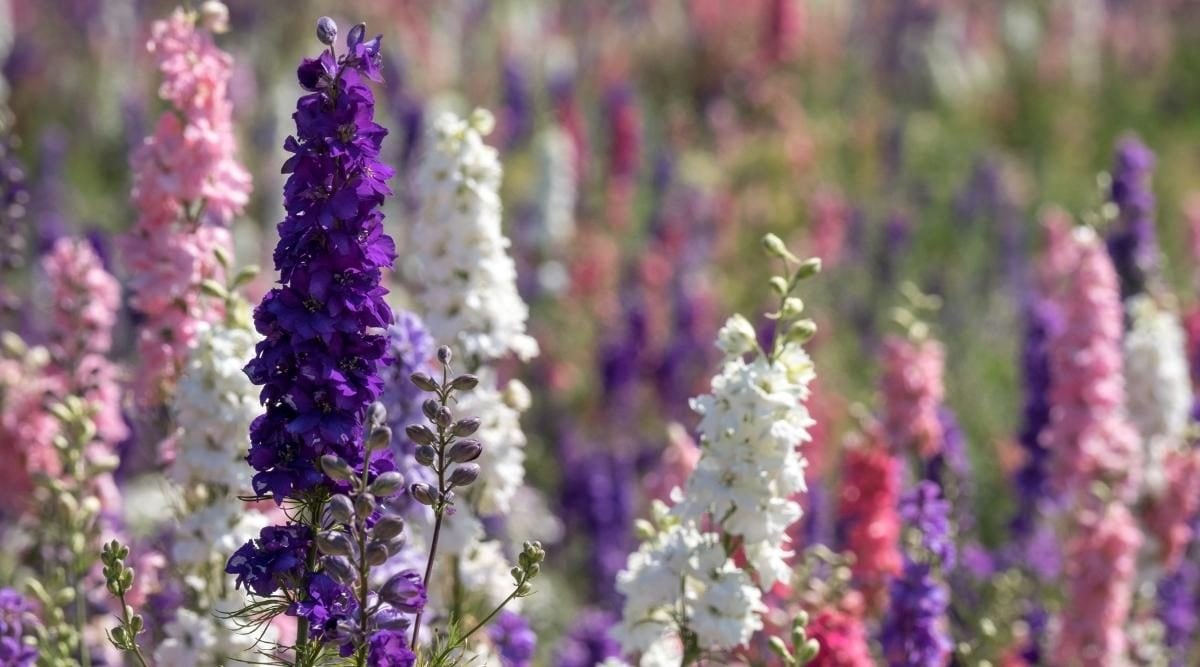Table of Contents
People wish to have a fascinating garden in their homes. A well-designed garden requires a group of charming flowers. It can share beautiful views throughout the year. Most people add flowering or evergreen plants to their gardens. They provide an elegant view of your garden from the early spring to the late autumn. Their beauty is irresistible, even in the winter.
Similarly, putting a long-flowering perennial in the garden isn’t a bad idea. There are several long-flowering perennial plants. A long perennial flowering plant takes two or four weeks to grow completely. After that, they represent their elegance in your garden for an entire year. In this blog, you will learn about some long, perennial flowering plants that require less maintenance.
Here’s a list of 24 long flowering perennials to help you decide which one to put in your garden, as they can carry out a charming landscape view.
1. Hardy Geraniums
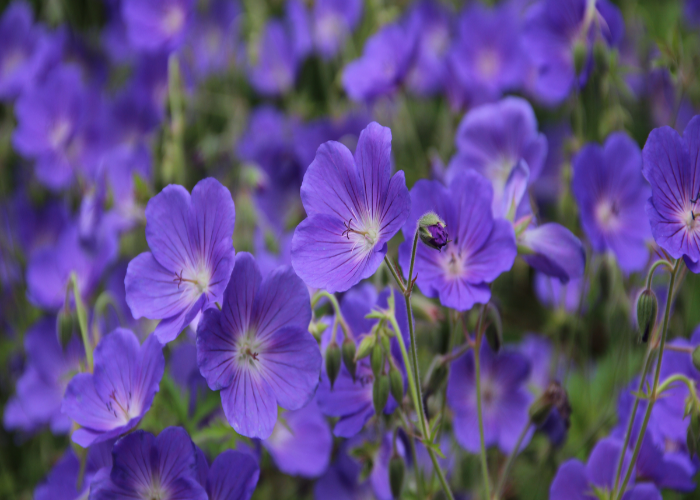
Hardy geranium is a fascinating long-flowering perennial plant. These types of flowers grow during the summer. Hardy geraniums choose well-drained soil to grow. It can absorb indirect and bright sunlight. They can stand even in the temperature of 23 degrees Celsius. Hardy geraniums are famous for their charming flowers. They produce flowers of different colours, such as pink, purple, blue, lavender, and others. Hardy geraniums can grow up to 36 inches from the soil. The perfect time to plant them in your garden is spring. It can gain a proper shape till the end of autumn.
2. Dahlias
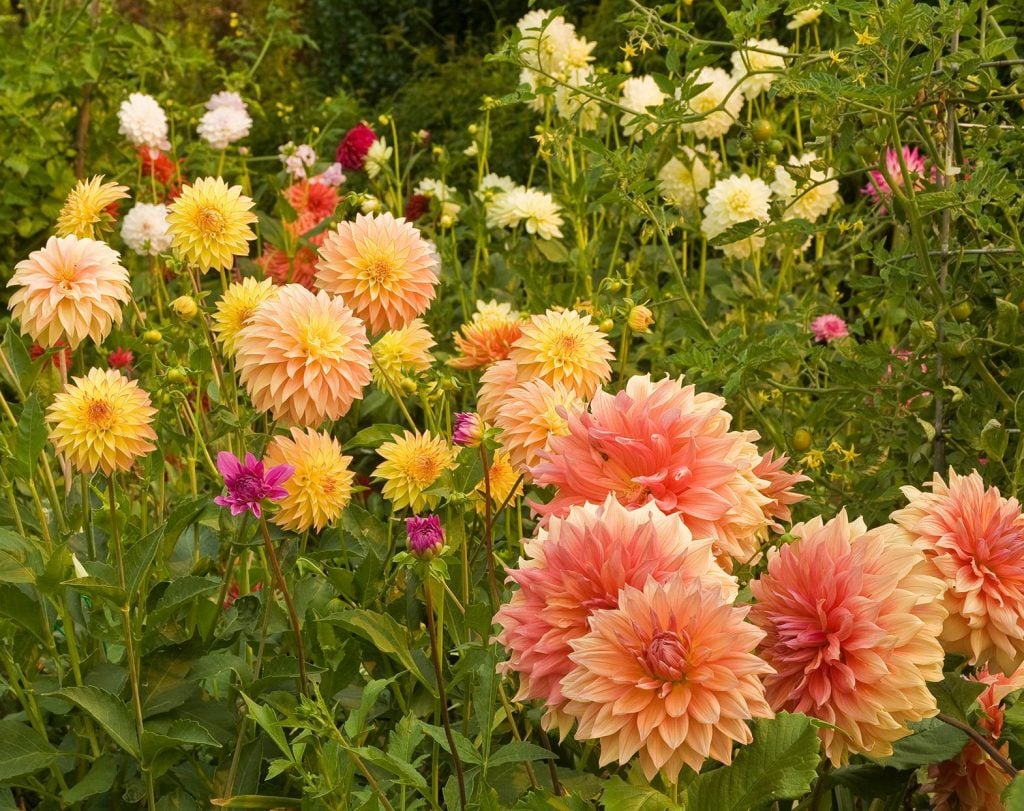
Dahlias are a common long-flowering perennial plant. It is also their botanic name. They have tuberous roots that help them remain constant in the winter. Dahlias can grow up to approximately 6 feet from the soil. They have over 30 species around the world. In general, Dahlia prefers to grow in natural, well-drained, and acidic soil. Summer and autumn are the perfect times to bloom this long perennial flower. Dahlias produce a variety of flowers, such as pink, red, orange, yellow, and others. This long-flowering perennial plant is very familiar in the UK.
3. Catmint
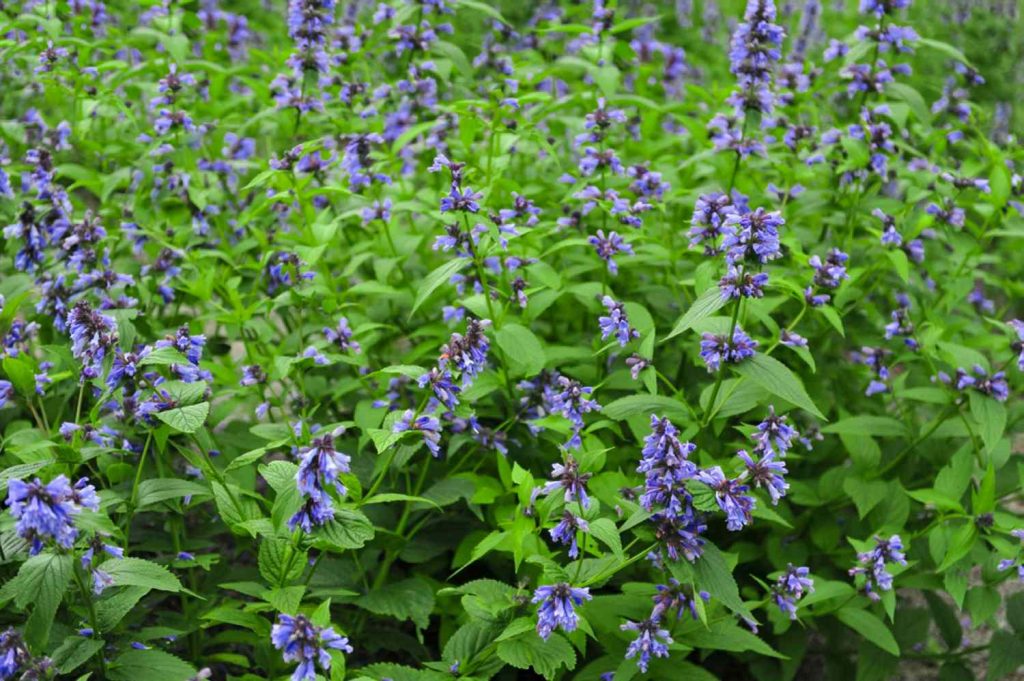
Catmint plants are generally known as ‘Nepeta’. People often recognise it as ‘Catnip’. They are famous for their elegant flowers and beautiful fragrance. In order to grow them in your garden, you must choose well-drained soil. The perfect time to grow a catnip is in the spring. They can gain significant height till the end of the summer. Make sure the soil pH level is around 5 to 8. They can grow up to 24 inches from the soil. Catmint produces white, pink, and purple flowers. They need bright sunlight to grow properly. Catmint or catnip plants prefer neutral, acidic soil to develop their flowers.
4. English Lavender
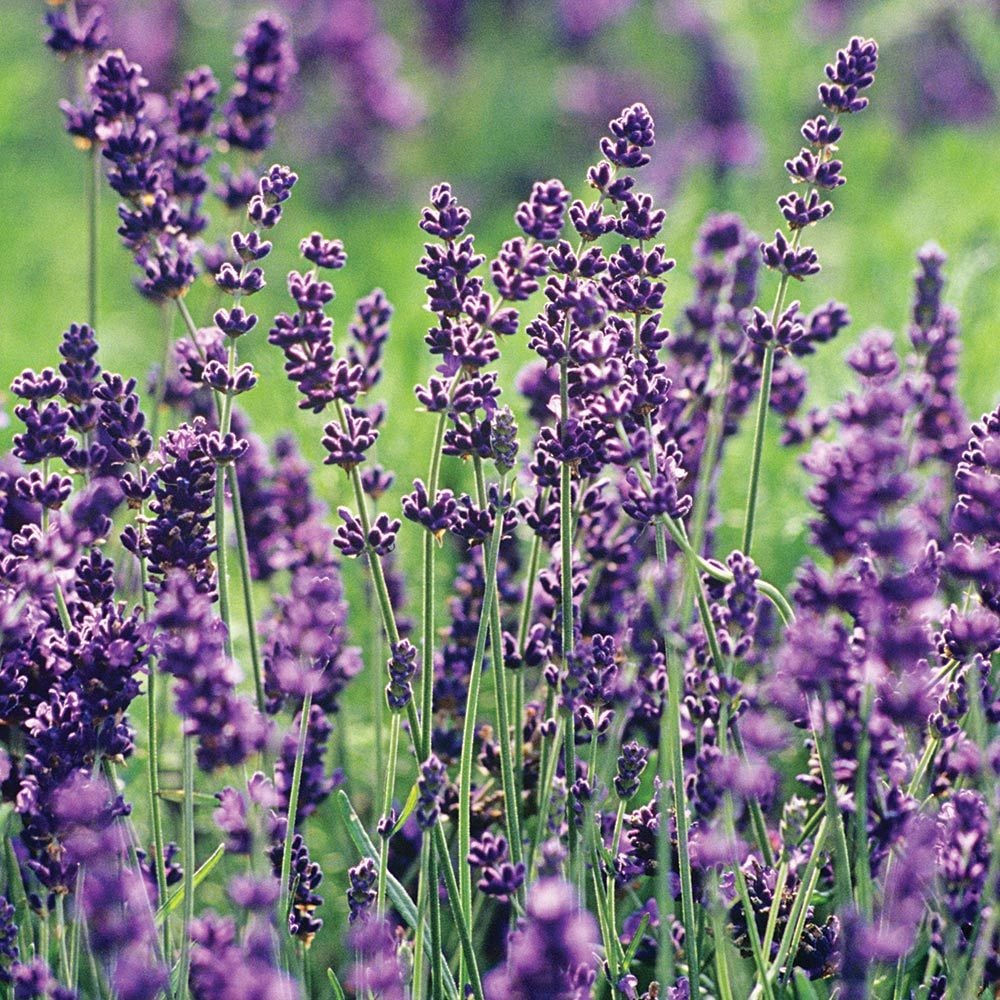
English lavender is a prominent long-flowering perennial plant. They are very familiar in the UK. English lavenders are popular for their fascinating flowers. Their scientific name is ‘Lavandula angustifola’. They can grow up to 3 feet tall and 4 feet wide from the soil. An English lavender requires bright sunlight and sandy soil to grow. They produce dark purple, light purple, violet-blue, lavender, pink, and white-coloured flowers. English lavender is a perfect choice for a rock or herb garden. The perfect time to plant them in your garden is summer. It can bloom the flowers in midsummer.
5. Yarrow
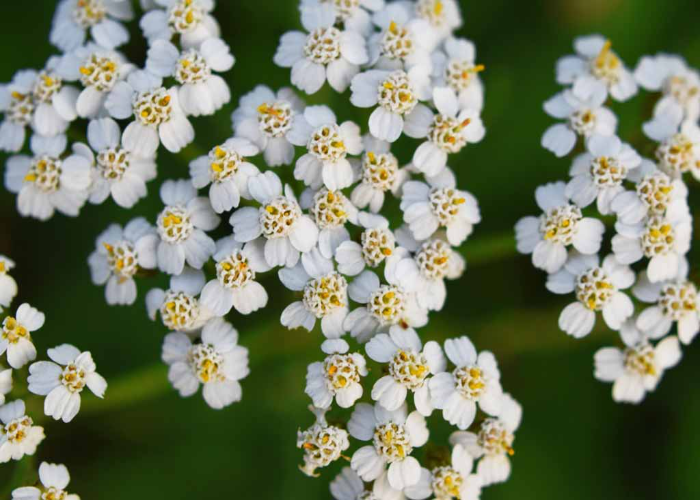
The scientific name of this long-flowering perennial plant is ‘Achillea millefolium’. The perfect time to grow a yarrow plant is in the summer. It attracts bees and butterflies. They require sandy, well-drained, and loamy soil to grow. Yarrow can grow up to 3 feet tall from the soil. Their flowers are yellow, red, white, orange, purple, and pink. They gain significant height in the autumn. This long-flowering perennial requires full and bright sunlight to develop its flowers. Yarrow plants also require proper fertilisation and water. After plantation, It can bloom flowers within 4 months.
6. Butterfly Bush
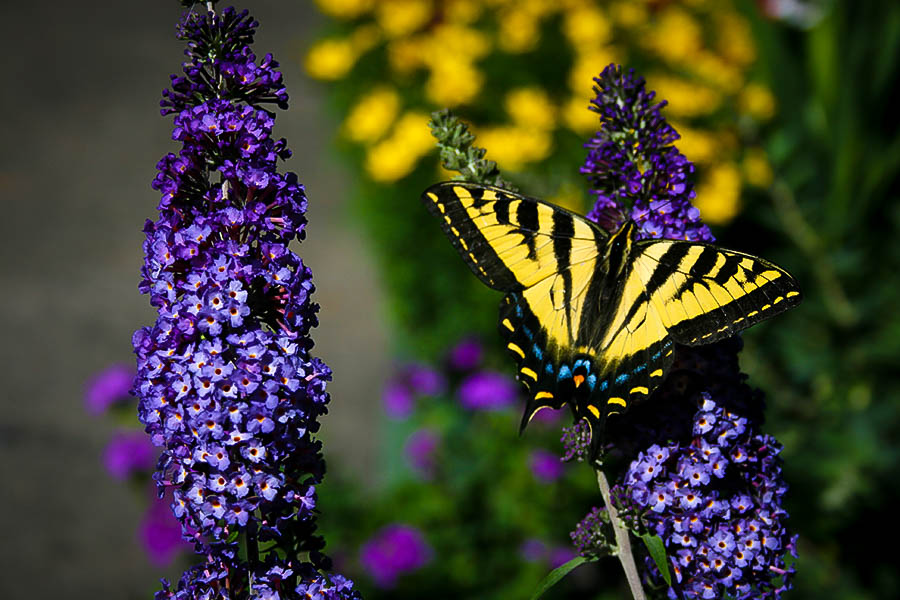
Butterfly bushes are popular long-flowering perennial plants in the UK. They can grow up to 12 feet tall and 8 feet wide from the soil. They are well known for their scientific name, ‘Buddjela Davidii’. People often call them ‘Buddlejas’. Butterfly bushes require well-drained and acidic soil to grow sufficiently. Make sure the acidic and alkaline level in the soil is neutral. Also, ensure that the soil pH level is around 6 to 7. They attract butterflies a lot. The best time to put butterfly bushes in your garden is in the summer. This flowering perennial is famous for its charming shrubs.
7. Spiderwort
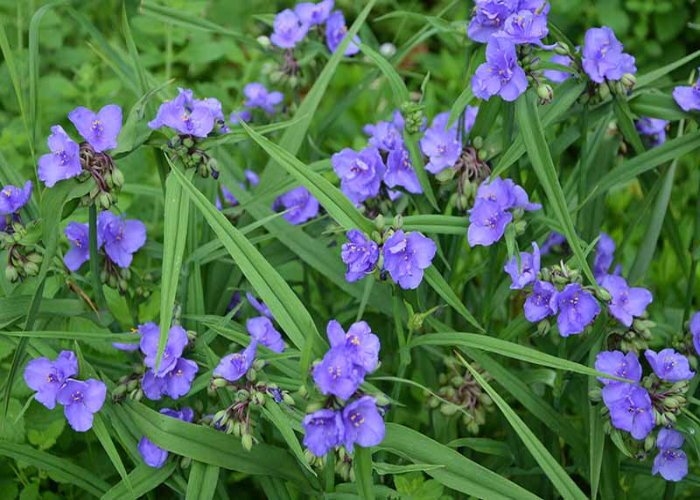
Spiderwort is one of the most popular long-flowering perennial plants. They grow in well-drained, acidic soil. It can grow up to 3 feet tall from the soil. Their scientific name is ‘Tradescantia’. Spiderwort grows in soil with a pH level of around 6.6 to 7.2. The best time to grow this plant is in the spring. Spiderwort produces pink, purple, and blue flowers. They require bright and full sunlight to grow properly. Use appropriate fertiliser and water to strengthen their roots and canes. Spiderwort can establish an appealing view in your garden.
8. Daylily
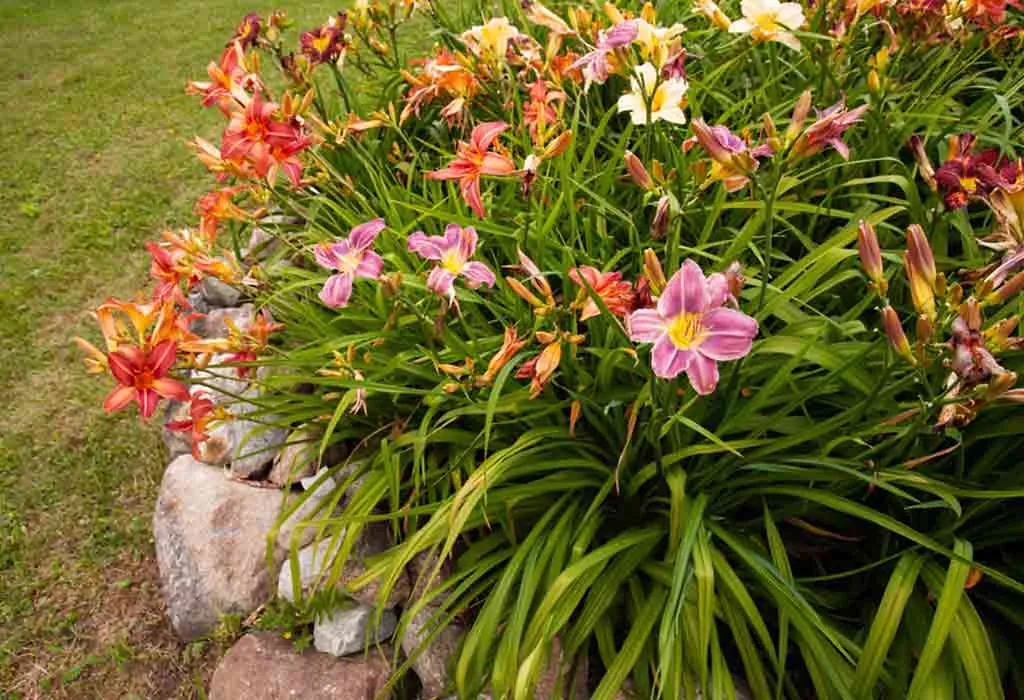
Daylily is a common flowering plant that is a perennial. They are commonly found in the UK. Spring is the right time to plant this flower in your garden. They require acidic soil to grow sufficiently. Make sure the soil pH level is neutral. Daylilies can absorb direct and bright sunlight. It produces fascinating flowers of different colours. It includes orange, red, yellow, purple, and others. Daylilies establish a charming view in your garden. It can grow up to 4 feet wide and 5 feet tall from the soil. Daylilies don’t require frequent fertilisation. Thus, it is easy to grow them in the garden.
9. Pincushions
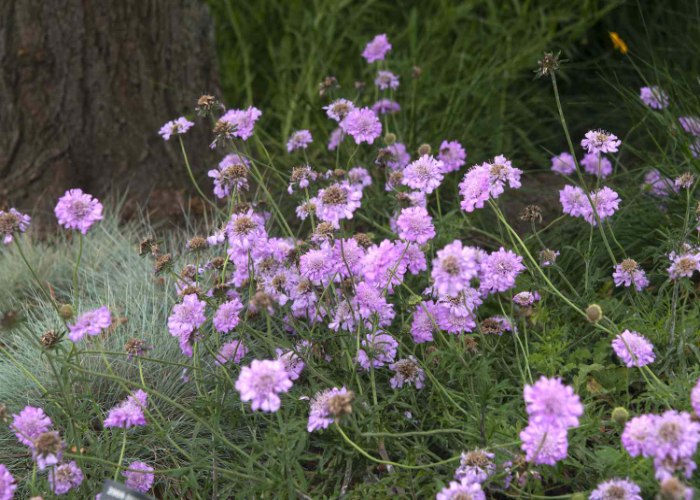
Pincushions are generally known for their beautiful flowers. Most people called this flower by its botanic name, ‘Scabiosa’. They belong to the herbaceous perennial group. Scabiosa generally grows in well-drained and moist soil. It required bright sunlight. The perfect time to plant this long-flowering perennial is in the summer. The flower of this plant blooms until autumn. They are very popular in the European region, even in the UK.
10. Peruvian Lily
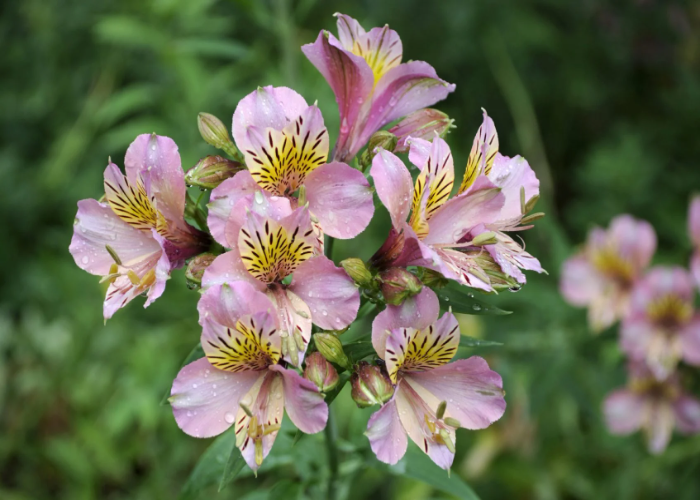
Peruvian lily is botanically known as ‘Alstroemeria’. It can grow up to 3 feet from the soil. They grow in well-drained soil with a pH level of around 5.5 to 6.5. Peruvian liliesprefer hot climates to grow effectively. Thus, proper and bright sunlight is beneficial for them. Summer is the best time to plant this long-flowering perennial. They produce blue, pink, orange, yellow, red, and orange flowers.
11. Masterworts
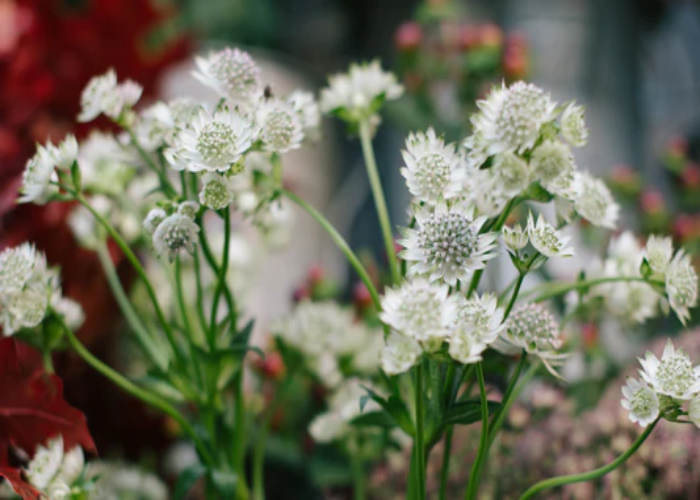
Masterwort is another popular long-flowering perennial plant which is quite common in the UK. Masterwort is famous for its beautiful and charming flowers. Their scientific name is ‘Astrantia’. They can grow up to approximately 3 feet tall from the soil. You are required to have acidic and well-drained soil to plant masterwort in your garden. If your soil is not dry, then fix it quickly. Dry soil strengthens their roots and helps them in the development process. They can grow white, blue, red, purple, and pink flowers. There are various masterwort exists in the world, such as ‘Abbey Road’, ‘Ruby Wedding’, ‘Buckland’, ‘Roma’, and others.
12. Black-Eyed Susan
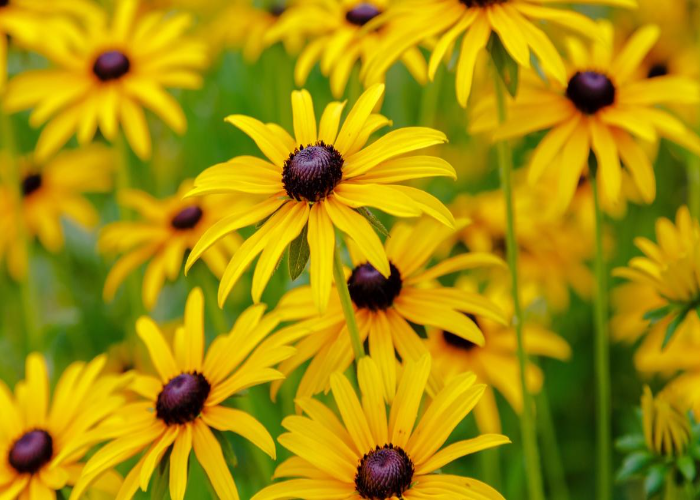
The black-eyed Susan looks almost similar to a sunflower, but they are different. People often recognise this flower as ‘Hairy Coneflower’, ‘Brown Betty’, and ‘ Marguerite Jaune’. This long-flowering perennial plant can grow up to 3 feet tall from the soil. Summer is the best time to plant them in your garden. In general, their flowers are yellow. They also bloom red and orange flowers. Black-eyed Susan grows in well-drained and well-moisture soil. Make sure the soil pH level doesn’t exceed the limit of 6.8. The proper watering process helps them to develop their flowers significantly.
13. Penstemons
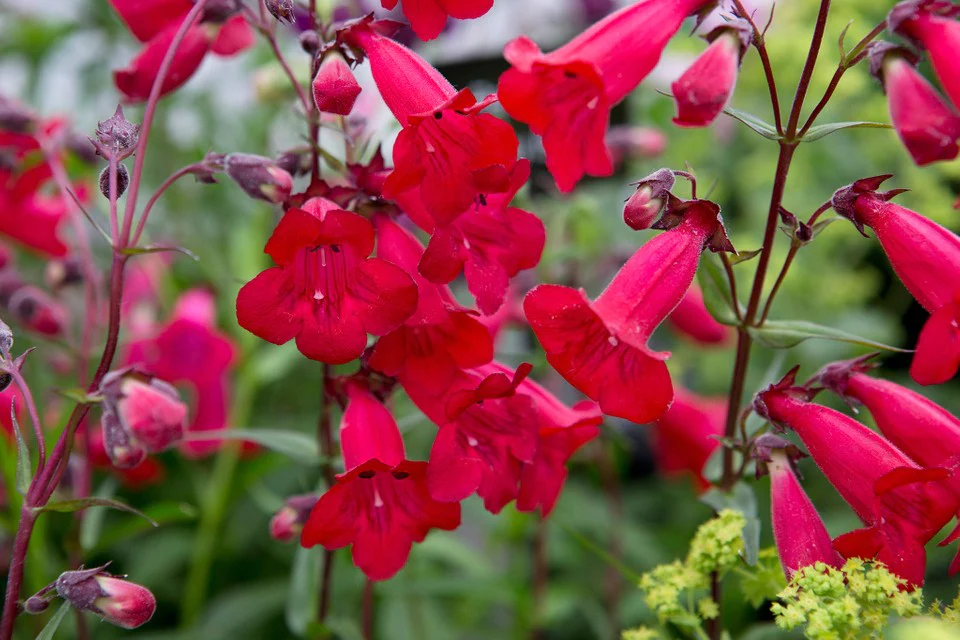
Penstemon plants belong to the plantain group. They are best known as ‘Beardtongue‘. They can absorb bright and direct sunlight. Penstemon grows in well-drained soil with a natural acid level. Spring is the perfect time to plant this long-flowering perennial in your garden. They consume a vast amount of water. So you have to provide them with an adequate amount of water. There are various types of penstemon you can find in the UK. It includes ‘Dark Towers’, ‘Husker Red’, ‘Elfin Pink’, ‘Jingle Bells’, and others.
14. Geums
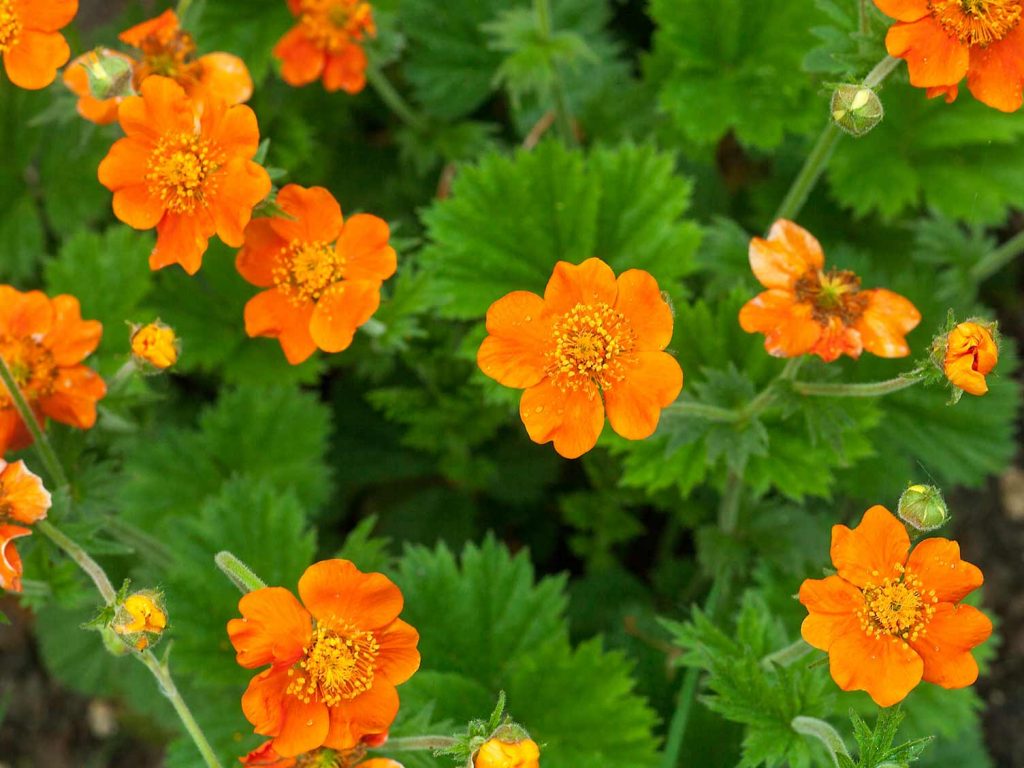
Geum plants are popular as ‘Avens’. People often call them the ‘Firestorm’. They can grow up to approximately 18 inches tall from the soil. They can consume bright sunlight, but not directly. They prefer well-drained, medium-moisture soil to grow in. The soil pH level must be around 5.5 to 7. There are various kinds of Avens are found in the UK. It includes ‘Woody Avens’, ‘Water Avens’, and others. The perfect time to plant this flowering plant is in the spring. Geum plants produce orange-coloured flowers. Their flowers establish a delightful view of your garden.
15. Stonecrop
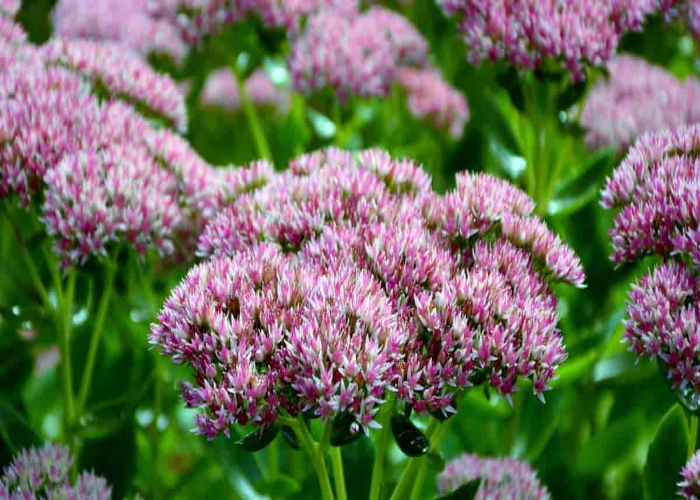
Stonecrop plants are best known as ‘sedum’. They are popular long-flowering perennial plants. In summer, they bloom the best. The summer heat helps the plants to grow effectively and gain their maximum height. Sedum plants can grow up to 24 inches from the soil. Stonecrop or sedum has over 600 species around the world. They produce yellow, red, pink, and white flowers. Stonecrop plants require well-drained, sandy, and loamy soil with a neutral acid level to grow. They consume vast amounts of water and sunlight.
16. Coneflower
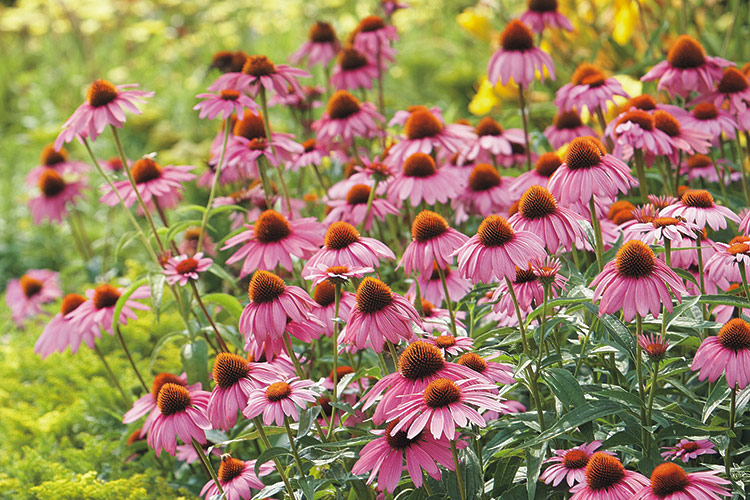
Coneflower is a popular long-flowering perennial plant in the European region. They are also very familiar in the UK. It shares similar characteristics as the black-eyed Susan. The scientific name of this plant is ‘Echinacea’. Most people recognise this plant as ‘Purple Coneflower‘. The perfect time to plant this long-flowering perennial is in the summer. It can grow up to 5 feet tall from the soil. It prefers well-drained soil with a neutral pH level. The summer heat is essential for them in blooming the flowers.
17. Bellflower
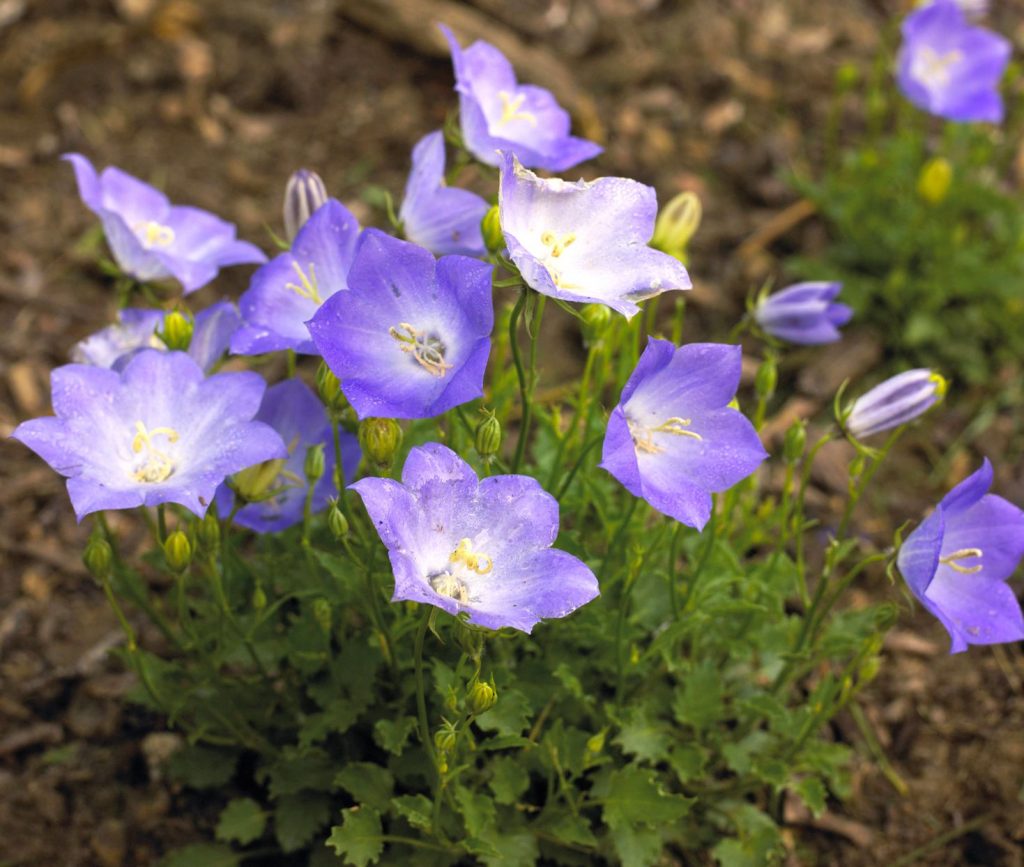
Bellflowers are a popular and common long-flowering perennial plant. It has over 500 species around the world. There are various types of bellflowers that you can add to your garden. It includes ‘The Arctic Bellflower, ‘Korean Bellflower, ‘Spanish Bellflower, ’Castle Crags Bellflower’, and others. The botanic name of this plant is ‘Campanula’. They produce blue, white, and purple flowers. Bellflowers can grow over 6 feet from the soil. They require full sunlight to develop their flowers.
18. Garden Phlox
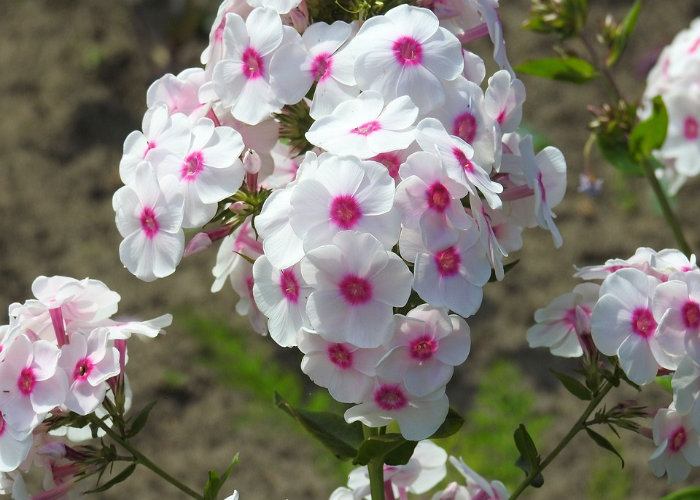
Garden phlox are popular for their beautiful flowers. They produce purple, pink, orange, and red flowers. Sometimes, a garden phlox can grow white flowers too. They are very popular long-flowering perennials and are found almost everywhere in the UK. A garden phlox is also known as the ‘Tall Phlox’. It can grow up to 4 feet from the soil. They are taller plants in their species. Summer is the right time to plant them in your garden.
19. Clematis
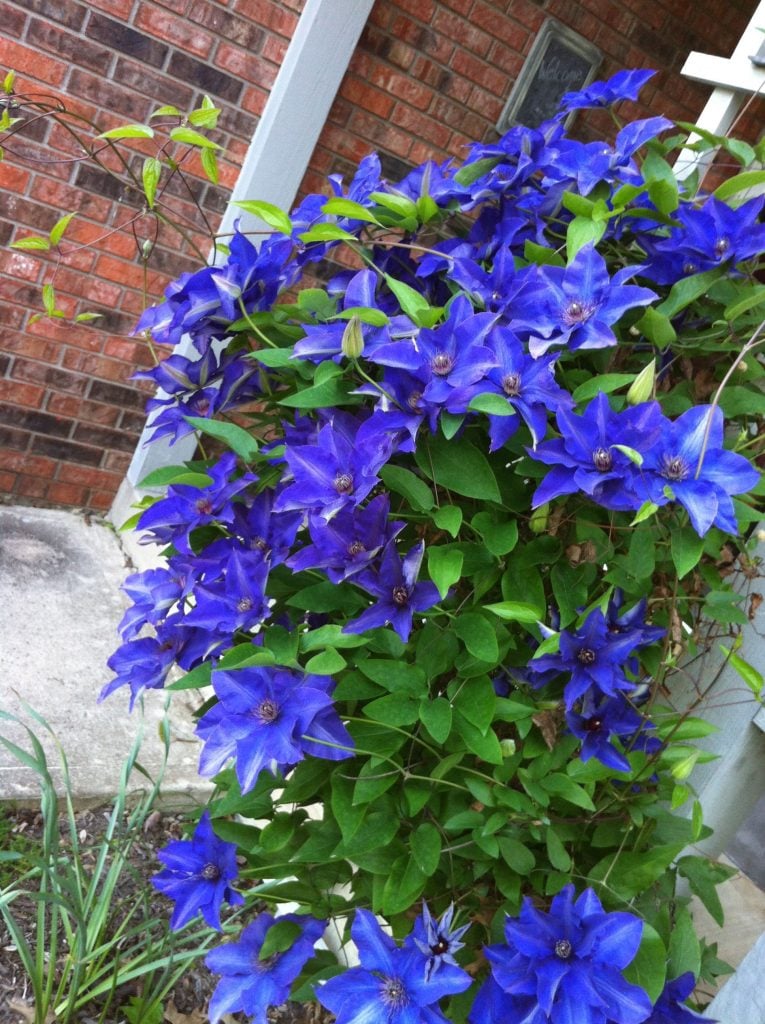
Clematis is a beautiful, long-flowering perennial plant. It is well known as ‘The President’. They are taller than other long, perennial flowering plants. It can grow up to 10 feet from the soil. Clematis is a deciduous perennial flower. They grow in well-drained compost soil. Clematis absorb bright sunlight. They’re very popular for their flowering vines. Clematis produces blue and violet-coloured flowers. In order to grow clematis in your garden, keep providing them with appropriate water and fertiliser.
20. Blue Star
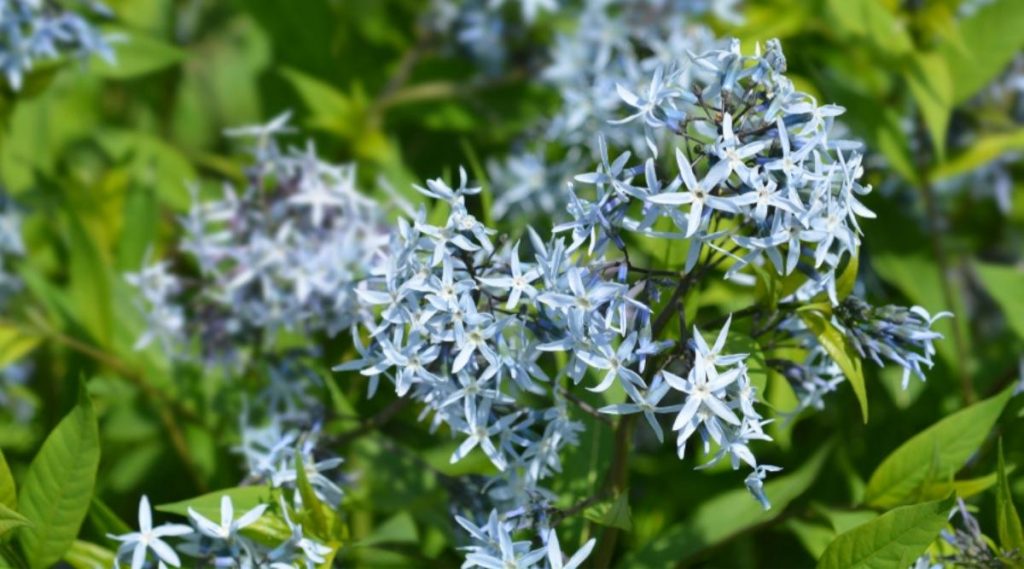
The blue star is often recognised by its botanical name, ‘Amsonia’. They’re very familiar, long-flowering perennial plants in the European region. The blue star is also very common in the UK. They can grow up to approximately 3 feet from the soil. This long-flowering perennial is famous for its floral appearance. They produce blue, white, and purple-coloured flowers. It can create a charming view in your garden. The ideal time to add them is in March. They grow in sandy, loamy, and chalky soil with a proper amount of clay. Make sure the soil pH level is around 6.2 to 7.
21. Wallflower
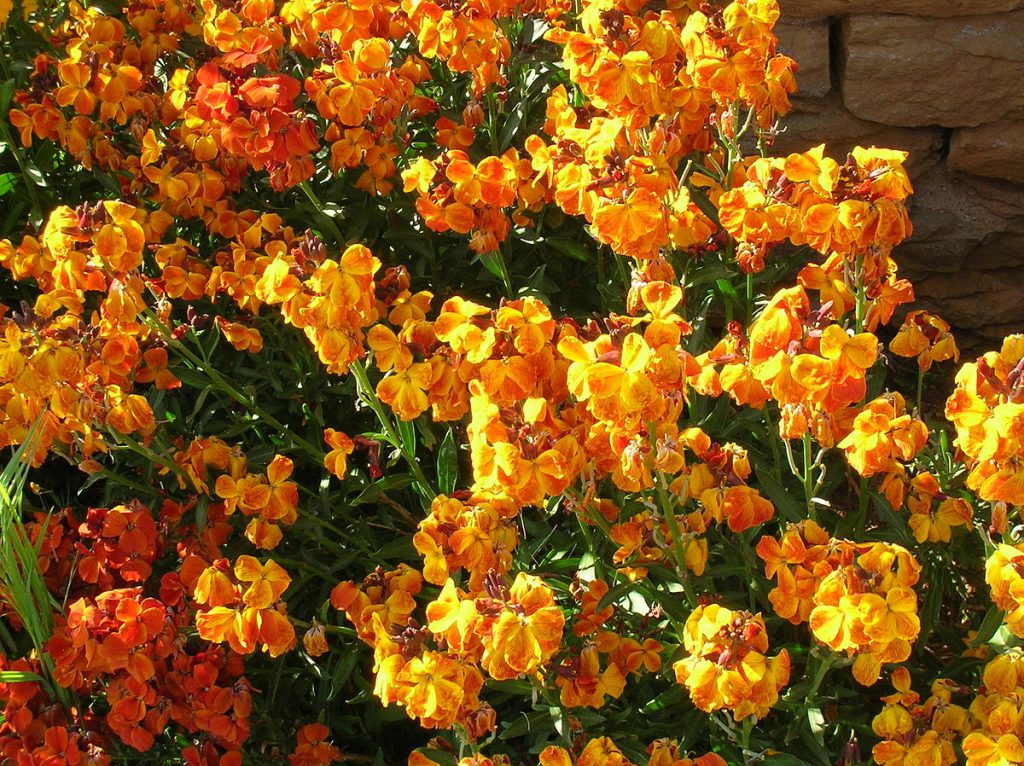
Wallflower plants are also common and found almost everywhere in the UK. The botanic name of this plant is ‘Erysimum linoleum’ or ‘Erysimum cheiri’. Wallflowersbelong to the annual, biennial, and herbaceous perennial groups. It can grow up to 3 feet tall and 4 feet wide from the soil. The right time to plant them in your garden is in the spring. It can gain significant height in the summer and grow properly until autumn. They grow up in sandy and well-drained soil with a pH level of around 7 to 9. Wallflower plants are famous for their yellow, purple, blue, orange, and red flowers.
22. Valerian
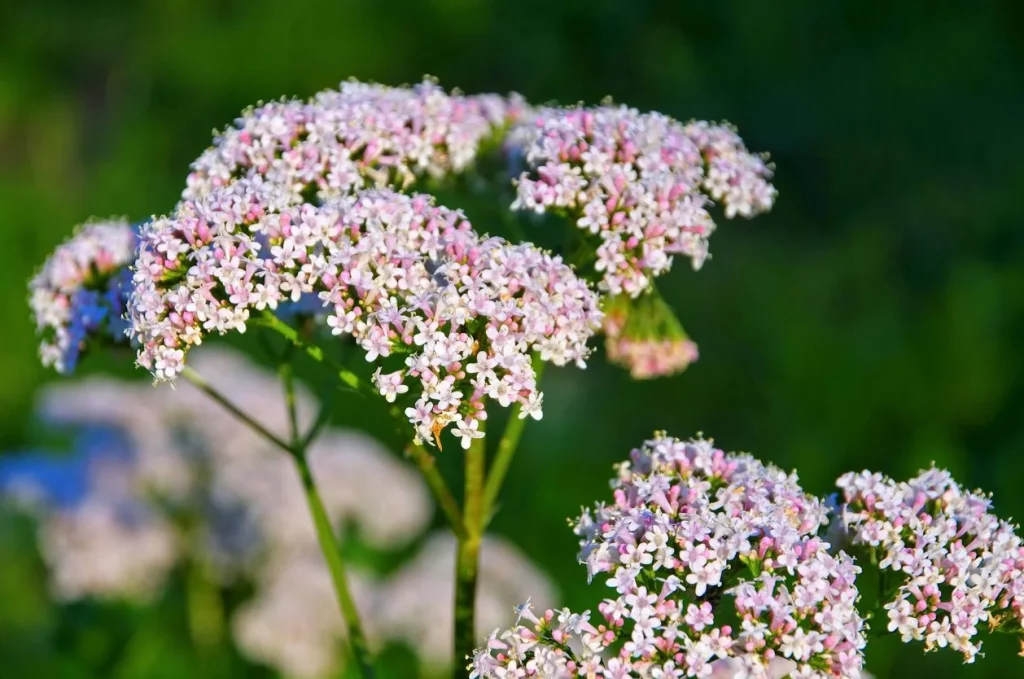
Valerian pants are also known as the ‘Valeriana’. They are common long-flowering perennials in the European region. Valerians are also quite familiar in the UK. Early summer is the right time to plant this flowering plant in your garden. Make sure you keep them in the right direction where the plant can get appropriate sunlight. Valerians grow in loamy and averagely well-drained soil. They produce white flowers that are charming. In a few regions, they can bloom pale pink flowers. Nitrogen fertilisers are perfect for this plant to grow effectively. Valerian plants can survive in harsh cold and winter.
23. Asters
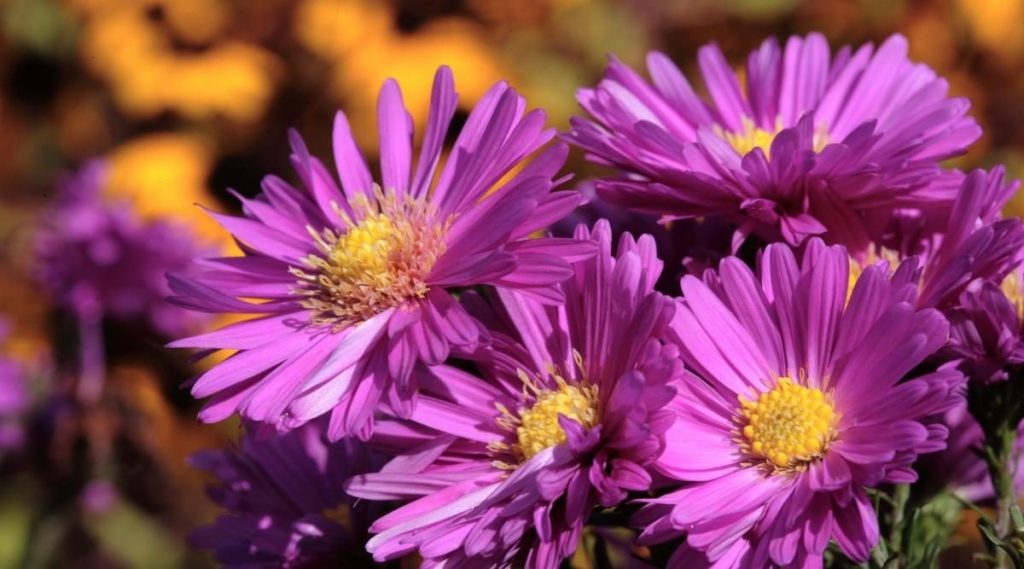
Aster plants are one of the most popular flowering plants in the UK. People often recognise it as the ‘New England Asters’ or ‘Frost Flowers’. Their botanic name is ‘Symphyotrichum’. Asters, or frost flowers, belong to the ‘Asteraceae’ flower group. They can grow up to 6 feet tall and 4 feet wide from the soil. Asters can absorb full and bright sunlight to grow effectively. They grow in loamy, well-drained soil with a neutral acid level. Make sure the soil pH level is around 5.8 to 6.5. Summer is the perfect time to plant asters in your garden. They bloom with blue, purple, pink, and white flowers.
24. Hibiscus
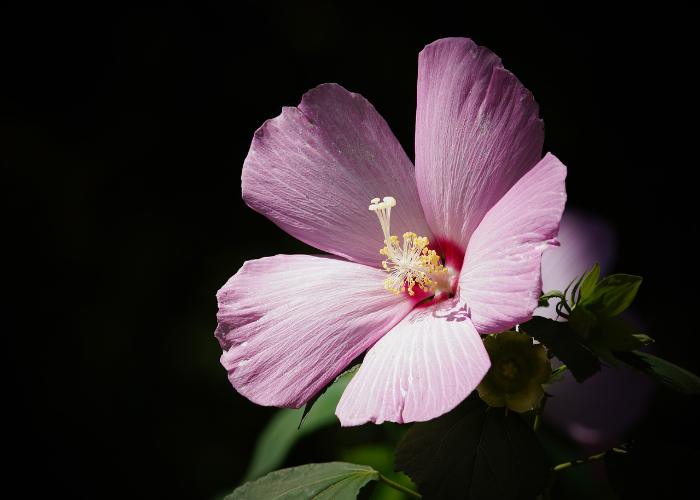
Hibiscus flowers are common long-flowering perennial plants in the world. It has over a hundred species around the world. It includes ‘Tropical Hibiscus’, ‘Hardy Hibiscus’, ‘Dark-eyed Hibiscus’, ‘Cameroon’s Hibiscus’, ‘Wild Hibiscus’ and others. They are famous for their iconic flowers. A hibiscus plant can grow approximately 7 to 10 feet from the soil. They grow in rich organic and average wet soil. Summer is the perfect time to plant hibiscus in your garden. They bloom with red, pink, and white flowers. In a few regions, it can produce blue flowers. Hibiscus is commonly found everywhere in the UK.
Get a Long-Flowering Perennial in Your Garden
Everyone wants their garden to look elegant and enchanting. Thus, adding long-flowering perennials can make their dreams come true. There are various long-flowering perennial plants in the world. Each has its characteristics and beauty. Some are popular for their fascinating flowers, and some have a sweet scent. Dahlias and lilies are known for their colourful and charming flowers. Meanwhile, butterfly bushes and catmints have a delightful fragrance. A few flowers, such as clematis, stonecrop, and penstemons, require extensive amounts of water and sunlight to grow significantly.
On the other hand, English lavender, blue star, and coneflower are famous for their floral appearances. Putting in a long-flowering perennial plant can give your garden an appealing look.
In this blog, you’ve heard about 24 different long-flowering perennial plants. So, which one is your favourite, and which one are you going to put in your garden first? Let us know in the comments.

